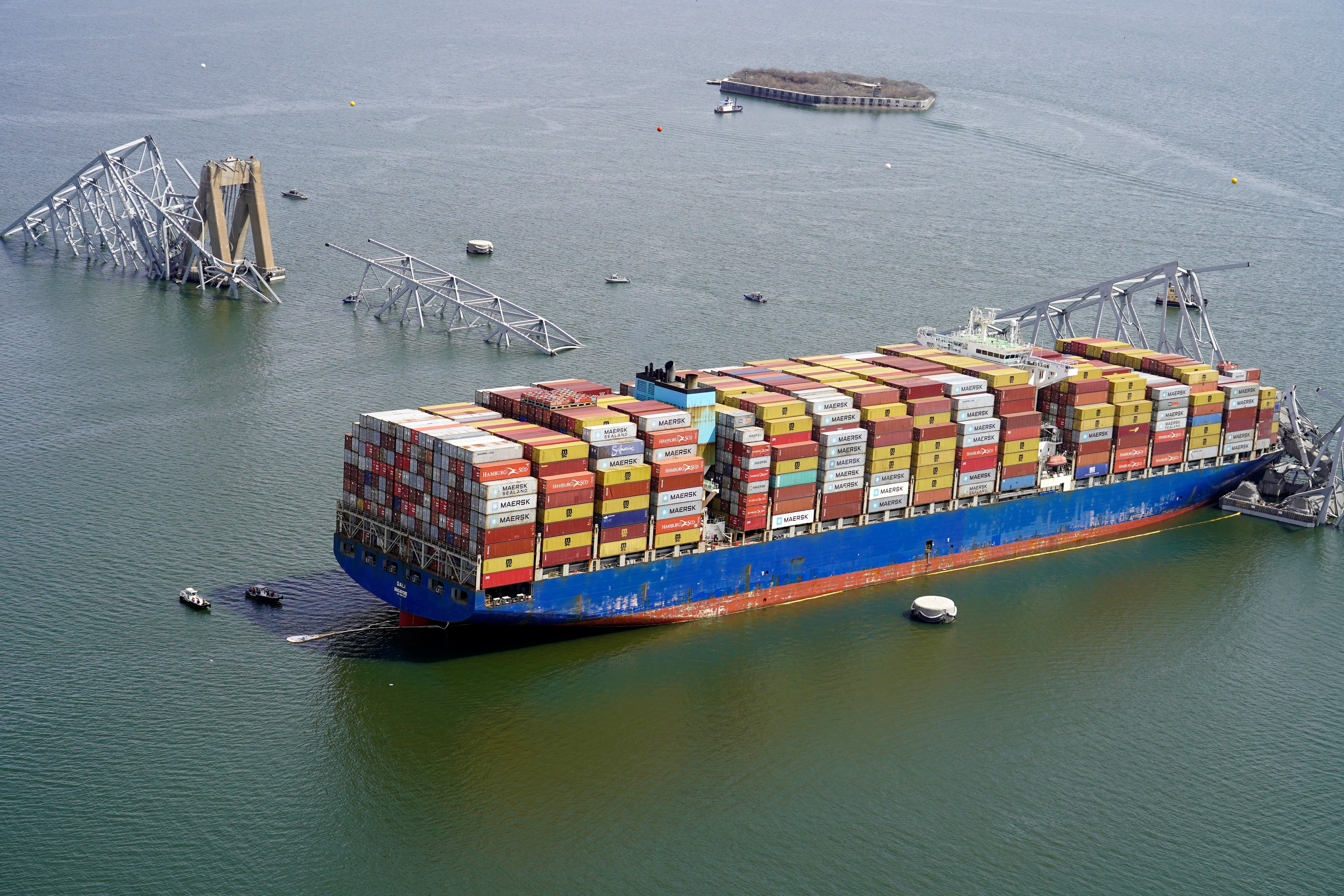Activists watch for potential impact on environment as Key Bridge cleanup unfolds
As authorities begin removing twisted wreckage from the the Francis Scott Key Bridge collapse, they’re confronting the potential for environmental fallout

Your support helps us to tell the story
From reproductive rights to climate change to Big Tech, The Independent is on the ground when the story is developing. Whether it's investigating the financials of Elon Musk's pro-Trump PAC or producing our latest documentary, 'The A Word', which shines a light on the American women fighting for reproductive rights, we know how important it is to parse out the facts from the messaging.
At such a critical moment in US history, we need reporters on the ground. Your donation allows us to keep sending journalists to speak to both sides of the story.
The Independent is trusted by Americans across the entire political spectrum. And unlike many other quality news outlets, we choose not to lock Americans out of our reporting and analysis with paywalls. We believe quality journalism should be available to everyone, paid for by those who can afford it.
Your support makes all the difference.Authorities removing twisted wreckage from the collapse of the Francis Scott Key Bridge are deploying nearly a mile's worth of barriers in the water, testing samples for contamination and monitoring the Patapsco River for oil and other hazardous spills as they confront the potential for environmental fallout.
The Unified Command, which includes state agencies and the Coast Guard, said Thursday they have unfurled 2,400 feet (732 meters) of an absorbent containment device, along with another 2,400 feet (732 meters) of barrier to try to prevent the spread of any hazardous materials.
It's a scenario that environmental experts are watching closely for a number of reasons, including the river's location in a metropolitan area that plays an important role in commercial shipping, as well as for marine life and migratory birds moving northward at this time of year.
“Any time you have something like this happen, there’s a risk of some sort of hazardous material getting in the water. And I think the question really is how much and to what extent,” said Gary Belan of American Rivers, a national nonprofit that focuses on issues affecting rivers across the country.
The possibility for a major environmental problem could arise from the bridge materials that fell into the river or from the containers aboard the cargo ship, the Dali, he said. But a big concern would be if the ship's fuel container ruptured and spilled into the water.
“If that gets ... into the river we’re talking about a pretty strong environmental catastrophe at that point, particularly going out into that part of the Chesapeake Bay," Belan said.
First responders have observed a sheen in the water near the site, according to the Unified Command, which said Thursday there was “no immediate threat to the environment.”
The ship carried 56 containers with hazardous materials, and of those, 14 that carried perfumes, soaps and unspecified resin had been destroyed. It's not clear if those materials had spilled into the water.
“We have been conducting air monitoring on the vessel and around the vessel with our contractor. No volatile organic compounds or flammable vapors were observed,” the Unified Command said in a statement posted online.
The Maryland Department of the Environment has begun sampling water up- and down-river and is on scene with first-responders to “mitigate any environmental” concerns, according to department spokesperson Jay Apperson.
Emily Ranson, the Chesapeake regional director for Clean Water Action, an environmental advocacy group, said it was too early to tell what the fallout could be. But she said the federal government should play a key role in enforcing regulations because of the interstate commerce at the port. The federal government has more tools than the state to enforce regulations, she said.
“The big thing to keep in mind is that it certainly reinforces the fact that we need to make sure that we have adequate protections and safety precautions with shipping with our port,” she said.
The crash happened in the early morning hours Tuesday, when the Dali, which had lost power, crashed into a pillar supporting the bridge, collapsing it moments later. The crash has closed off a major U.S. port and left six construction workers on the bridge presumed dead. Two people were rescued from the site.
Subscribe to Independent Premium to bookmark this article
Want to bookmark your favourite articles and stories to read or reference later? Start your Independent Premium subscription today.